Low FODMAP Gluten-Free Cinnamon Rolls are an indulgent treat. They are rich with butter and sugar and the cream cheese frosting truly gilds the lily. Cinnamon rolls should be a bit yeasty, and springy, with a pronounced brown sugar/cinnamon flavor and our low FODMAP version hits all these points. Toppings vary from light glazes to American-style buttercreams, but our research told us that you all like Cream Cheese Frosting, so that is what we created for you. Lactose-free, of course. There is a fair amount of sugar and fat in these Low FODMAP Gluten-Free Cinnamon Rolls as well; always eat to your tolerances.
Developing a Gluten-Free Cinnamon Bun Recipe
Every now and then a recipe puts me through my paces as a recipe developer. You can read about my hard work while developing a really good Low FODMAP Rugelach, which I finally did achieve, but the process was almost my undoing.
These Low FODMAP Gluten-Free Cinnamon Rolls were a similar chore. It took many versions to get it right. I looked into recipes by King Arthur Flour (hard and dry) and the “Cinnabon copycat” versions that abound (not any where near a Cinnabon texture or flavor), in addition to ones featured on gluten-free blogs and in books from my library, both professional texts as well as books aimed at the home baker. Dry. Dry. Dry. Crumbly. Crumbly. Crumbly. No springy texture in sight. It was astonishing to me how bad they all were.
What was I going to do? The answer was in one key ingredient: FLOUR!
Choosing The Right Flour
PLEASE READ THIS SECTION. I had been playing around with gluten-free pizza dough recipes and none were to my satisfaction until I tried using Better Batter Gluten-Free All-Purpose Flour. What is so special about this flour, you ask? Pectin! The ingredients are: Rice flour, brown rice flour, tapioca starch, potato starch, potato flour, xanthan gum, pectin (lemon derivative). It also happens to be GMO-free, certified kosher, top 10 allergy friendly and GFCO certified gluten free.
The pectin is what makes it so different. In yeast recipes, in particular, I find that it gives that “spring” that I was missing when using other flours, even my beloved Bob’s Red Mill 1 to 1 Gluten Free Baking Flour.
If you want to make your own Better Batter blend, follow this DIY recipe.
Buy The Right Flour
If you want great results from this recipe, you MUST use Better Batter Gluten-Free All-Purpose Flour. If you want your Low FODMAP Gluten-Free Cinnamon Rolls to look like the images, you MUST use Better Batter Gluten-Free All-Purpose Flour. If you use another flour the rolls will be hard, dry, crumbly, with no springiness and in my opinion are not worth the time or cost of ingredients. Please use Better Batter Gluten-Free All-Purpose Flour. You won’t regret ordering it. You will also be able to make our Low FODMAP Caramel Pecan Sticky Buns, among other recipes.
Let’s Talk About Sugar, FODMAPs & IBS
Sugar can be a confusing ingredient for those with IBS and following the low FODMAP diet. Let’s divide IBS and the diet in two parts, because the discussion is different in reference to sugar.
Let’s address sugar, FODMAPs and Monash University lab testing and reporting. When I began the diet in 2015 white sugar and brown sugar on the Monash app were listed as Green Light and the recommended low FODMAP serving size was 1 tablespoon. Curiously, there was and is no small print on these app entries, as there often is for additional information, and there also was and is no Moderate or High FODMAP amount listed.
Important Sugar Info
We were working on some recipes with Monash at the time and some contained more than 1 tablespoon of sugar per serving, so something seemed off to me. I queried Monash about the app listed serving size. We were told that the serving size on the app was based upon Australian healthy eating guidelines. I was stunned. Was this not about FODMAPs? No, it was not. White table sugar is sucrose, which in turn is a disaccharide and made up of glucose and fructose. It never contains excess fructose, therefore it is not a FODMAP issue.
Curiously, not long after this discussion, during one of the Monash app updates, the sugar and brown sugar entries (and the raw sugar) all of a sudden increased 4-fold to ¼ cup or 40 g to 50 g being a Green Light “low FODMAP” serving size. For some reason the icing/confectioners’ sugar is still at 1 tablespoon (which makes no sense; please see our big Sugar article).
How Much Sugar Is OK To Eat?
How much sugar is okay to eat depends on many things. If you are concerned from a FODMAP perspective, you now know that you do not have to be. Table sugar does not contain FODMAPs.
Some people with IBS do find sugar to be a trigger for digestive upset. It isn’t a FODMAP issue, but sugar can instigate IBS symptoms. You have to know your own tolerance levels. If you are sensitive to sugar, then this recipe for Low FODMAP Gluten-Free Cinnamon Rolls is not for you.
FYI the FODMAP Friendly App presently (Summer 2020) lists white sugar and brown sugar as a “Pass” at 1 tablespoon (14 g and 13 g respectively). No further information is given.
Of course, only you can decide how much sugar is too much for you.
If you want to read more, we have a fabulous Explore An Ingredient: Sugar article for you.
How To Make Low FODMAP Gluten-Free Cinnamon Rolls
I love using instant or rapid-rise yeast as it eliminates the need to proof in liquid. You begin by simply combining your dry ingredients in a mixer bowl.
Heat the milk and butter together. The butter must melt and you need a thermometer to gauge when the mixture is 110°F to 115°F (43°C to 45°C). If it is too hot, simply let it cool.
Begin to mix the wet and dry ingredients together on a low speed, going up to medium speed. It will look sticky at first, as seen below.
Keep mixing for a minute or two or until the dough is no longer sticky and it is beginning to come away from the bowl cleanly.
Form it into a ball and place in an oiled bowl, ready to be covered with plastic wrap and a towel to rise in a warm, draft-free location.
After about an hour it will have risen and have a spongy texture:
It should not be sticky at all and will be ready to roll out.
Lightly flour a large piece of parchment paper:
Place dough in the middle and give it a light sprinkling of flour, then pat down a bit and get ready to roll out into a large rectangle:
Roll out to a 12-inch (30.5 cm) high, top to bottom, and 16-inch (40.5 cm) wide, side to side, rectangle. Spread the filling all over the dough – an offset spatula works wonders here – leaving about a ½-inch (12 mm) border along the long top edge.
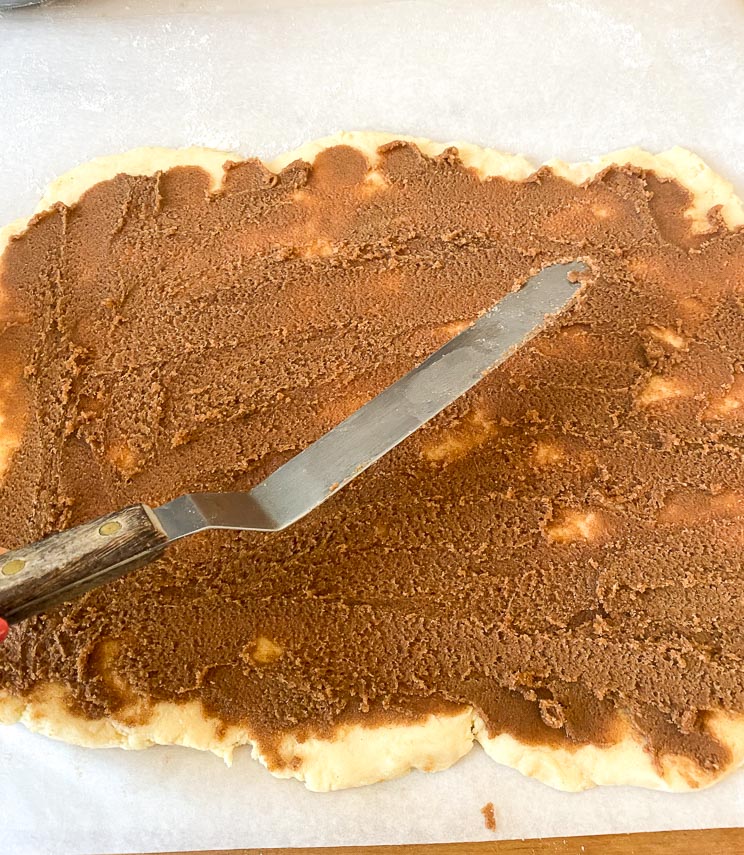
Roll up jellyroll style into a nice spiral log:
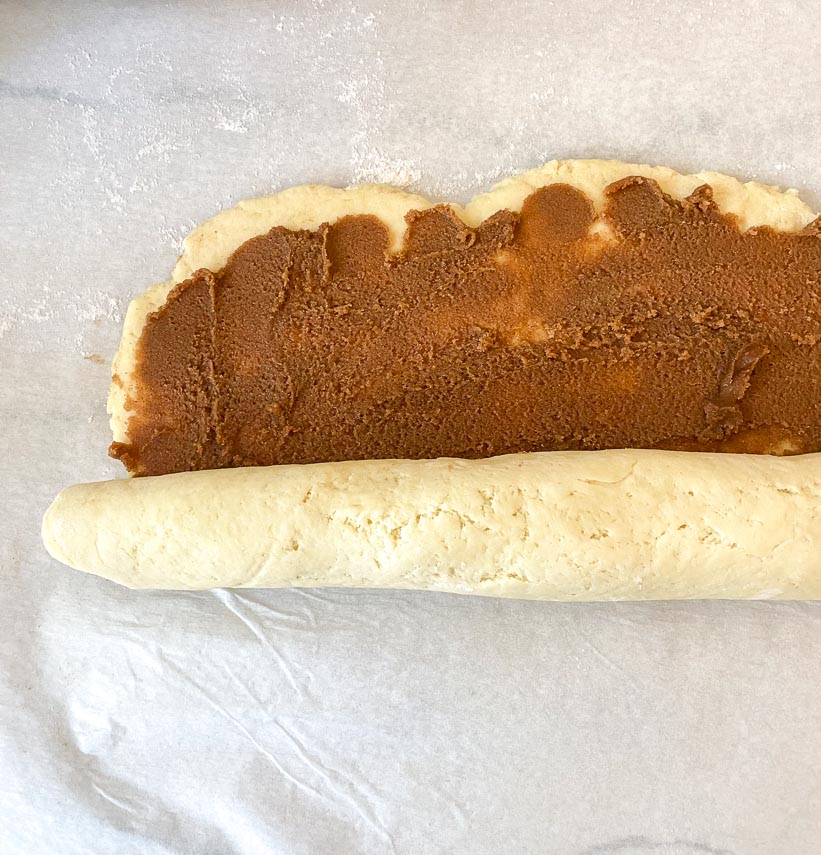
Next, you need to cut the log crosswise evenly into 12 pieces.
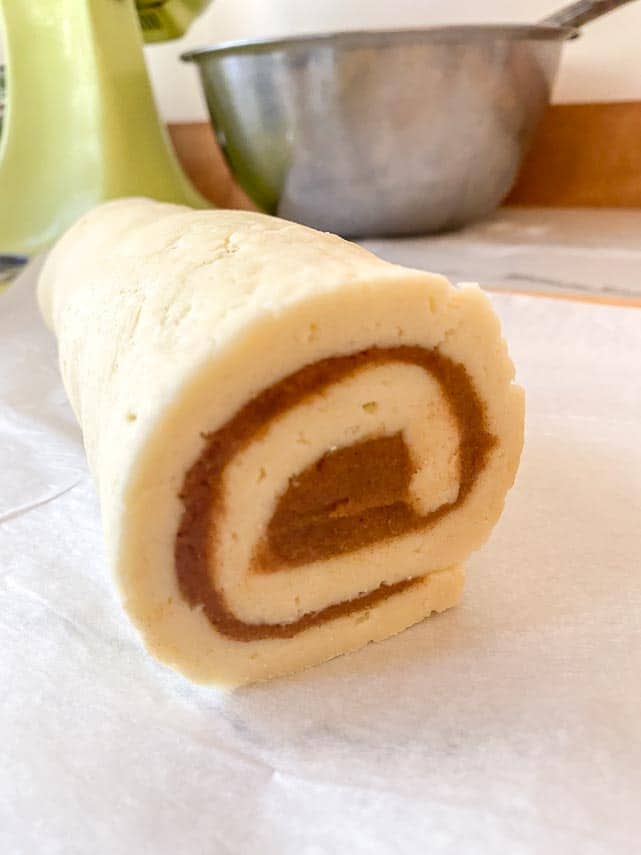
I find this is easiest to do if you cut it in half, then in half again as seen here. Now you are ready to cut each section into thirds.
Nestle the cut rolls, cut side up, in your pan that has been coated with nonstick spray:
Bake until just light golden brown:
Wait a moment – then slather with cream cheese frosting. You want the rolls warm enough to “melt-in” the frosting, but if they are too hot the frosting will completely melt and liquify. Follow directions in the recipe below.
Ready to eat and at their best when warm and fresh from the oven!
More Breakfast & Brunch Ideas
If you are looking for more decadent breakfast and brunch dishes, try our Caramel Pecan Sticky Buns, Cinnamon Streusel Coffee Cake, Lemon Poppy Seed Waffles, Chocolate Almond Granola, Cheddar Cornmeal Waffles with Bacon, and Chocolate Pancakes.
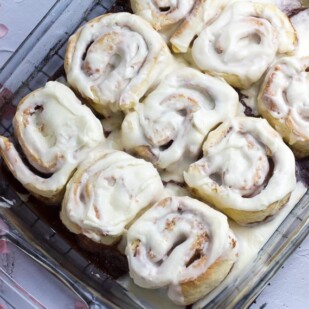
Low FODMAP Gluten-Free Cinnamon Rolls
Low FODMAP Gluten-Free Cinnamon Rolls are an indulgent treat. They are rich with butter and sugar and the cream cheese frosting truly gilds the lily. Cinnamon rolls should be a bit yeasty, and springy, with a pronounced brown sugar/cinnamon flavor and our low FODMAP version hits all these points. Toppings vary from light glazes to American-style buttercreams, but our research told us that you all like Cream Cheese Frosting, so that is what we created for you. Lactose-free, of course. There is a fair amount of fat in these Low FODMAP Gluten-Free Cinnamon Rolls as well; always eat to your tolerances.
Ingredients:
Cinnamon Rolls:
- 3 cups (450 g) Better Batter Gluten-Free Flour; please do not substitute any other flour
- ½ cup (99 g) sugar
- 2 ¼ teaspoons instant or rapid-rise yeast, such as Saf-Instant Yeast
- 2 teaspoons baking powder; use gluten-free if following a gluten-free diet
- ½ teaspoon salt
- 1 cup (240 ml) lactose-free whole milk
- ¼ cup (57 g) unsalted butter, at room temperature, cut into pieces
- 2 large eggs, at room temperature
- ¼ cup (60 ml) (60 ml) neutral flavored vegetable oil, such as canola
- 1 teaspoon apple cider vinegar
Filling:
- ½ cup (1 stick; 113 g) unsalted butter, at room temperature, cut into pieces
- 1 cup (213 g) firmly packed light brown sugar
- 1 ½ tablespoons cinnamon
- ½ teaspoon vanilla extract
Cream Cheese Frosting:
- 3 cups (270 g) sifted confectioners’ sugar
- ¼ cup (60 g) lactose-free cream cheese, such as Green Valley Creamery
- 2 tablespoons unsalted butter
- 1 teaspoon vanilla extract
Preparation:
-
For the Cinnamon Rolls: In the bowl of a stand mixer fitted with a flat paddle add the flour, sugar, yeast, baking powder and salt and mix on low speed briefly to combine.
-
Heat the milk and butter to between 110°F to 115°F (43°C to 45°C) in a small saucepan on the stove, making sure butter is melted. Meanwhile, whisk together the eggs, oil and vinegar in a small bowl or measuring cup.
-
Add the warm milk and the beaten egg mixture to the flour mixture and mix on medium speed until the dough comes together; it will pull away fairly cleanly from the sides of the bowl. Scrape down and keep mixing for about a minute or 2 or until the dough is soft, not sticky at all and can form a cohesive shape.
-
Oil a large bowl, place dough in bowl, turn it round to coat with oil, cover with plastic wrap and a towel and place in a warm, draft-free location for about 1 hour or until it looks risen, soft and a bit spongy.
-
Make the Filling: During the last few minutes of rising, make the filling. If your butter is soft enough you can do this by hand (beating vigorously with a wooden spoon or spatula) but you can also do this with your mixer: cream the butter, brown sugar, cinnamon and vanilla together until thoroughly blended and soft enough to spread.
-
Assemble the Rolls: Position rack in center of oven. Preheat oven to 350°F (180°C). Coat the inside of a 13-inch by 9-inch (33 cm by 23 cm) ceramic or ovenproof-glass baking pan with nonstick spray; set aside.
-
Lightly flour a large piece of parchment paper and place the risen dough in the center. Pat it down a bit with floured hands. Lightly flour a rolling pin and roll out the dough to about a 12-inch (30.5 cm) high, top to bottom, and 16-inch (40.5 cm) wide, side to side, rectangle. Spread the filling all over the dough – an offset spatula works wonders here – leaving about a ½-inch (12 mm) border along the long top edge.
-
Starting at the bottom long edge, use the parchment paper to help you begin to create a tight roll. Continue to roll up the dough (without the parchment) into a firm jelly-roll going all the way to the top. As you “finish” the roll use your fingers to help the bare edge adhere to the roll itself, using a bit of pressure. Pinching gently is fine.
-
Place the roll seam side down on your work-surface and cut crosswise into 12 cinnamon rolls. I find it helps accuracy to cut the log in half, then cut each half into thirds to create even portions. Place the individual rolls, cut side up, in prepared pan in a 3 by 4 grid.
-
Bake for about 25 to 35 minutes or until very light golden brown. Meanwhile, make your frosting so that it is ready when the rolls emerge from the oven.
-
For the Frosting: Place confectioners’ sugar in your mixer bowl fitted with flat paddle attachment (or use hand-held mixer). Beat in the cream cheese, butter and vanilla extract and keep beating on low-medium speed until super smooth and creamy. It should be thick but spreadable.
-
As soon as the rolls come out of the oven, place the pan on a rack and dab a little frosting on one of the rolls. If the frosting melts and dissolves and disappears right away, wait a minute or two – but 5 minutes might be too long – then slather the tops of the rolls. You want the frosting to melt into and onto the rolls but still retain its opaque white look. Serve warm and as soon as possible! They can be reheated, but they will never be as delectable as when still warm from the oven. If you must, they may be stored at room temperature overnight and reheated, but they will not be the same at all. Their texture becomes much firmer, less springy and cannot be compared to fresh.
Dédé's Quick Recipe Tips Video
Notes:
Tips
FODMAP Information
Our recipes are based on Monash University and FODMAP Friendly science.
- Butter: Both Monash University and FODMAP Friendly have lab tested butter. Monash states that a low FODMAP Green Light portion is 1 tablespoon or 19 g and also states that “butter is high in fat and does not contain carbohydrates (FODMAPs)”. FODMAP Friendly gives it a “Pass” at 1 tablespoon or 19 g. Both recommended serving sizes are presented as part of healthy eating guidelines, not as maximum FODMAP serving size. Fat can affect guy motility and trigger IBS symptoms in some people. Eat to your tolerance.
- Sugar: Monash University and FODMAP Friendly have both lab tested white, granulated sugar. Monash states that a Green Light low FODMAP serving size of white sugar is ¼ cup (50 g). FODMAP Friendly simply states that they have tested 1 tablespoon and that it is low FODMAP. Regular granulated white sugar is sucrose, which is a disaccharide made up of equal parts glucose and fructose. Sucrose is broken down and absorbed efficiently in the small intestine.
Please always refer to the Monash University & FODMAP Friendly smartphone apps for the most up-to-date lab tested information. As always, your tolerance is what counts; please eat accordingly. The ultimate goal of the low FODMAP diet is to eat as broadly as possible, without triggering symptoms, for the healthiest microbiome.
Nutrition
All nutritional information is based on third-party calculations and should be considered estimates. Actual nutritional content will vary with brands used, measuring methods, portion sizes and more. For a more detailed explanation, please read our article Understanding The Nutrition Panel Within Our Recipes.
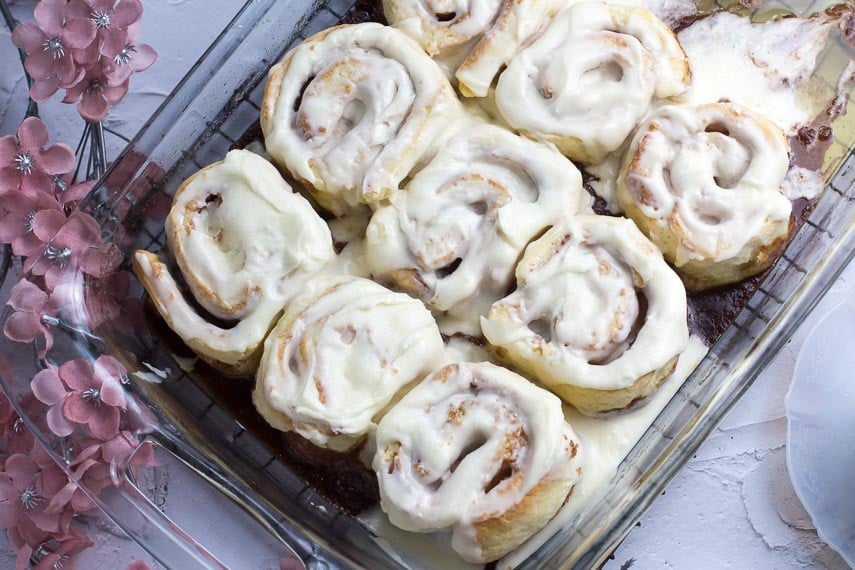
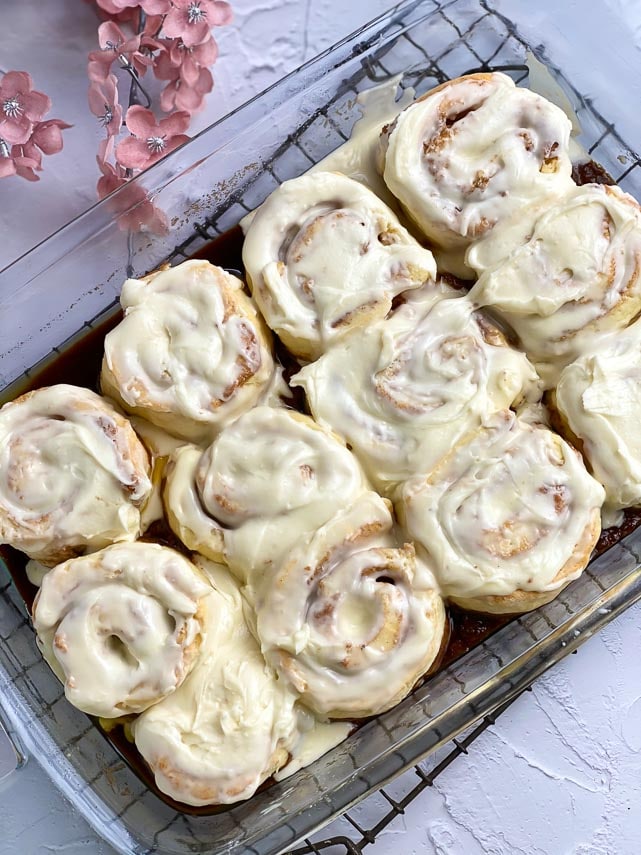
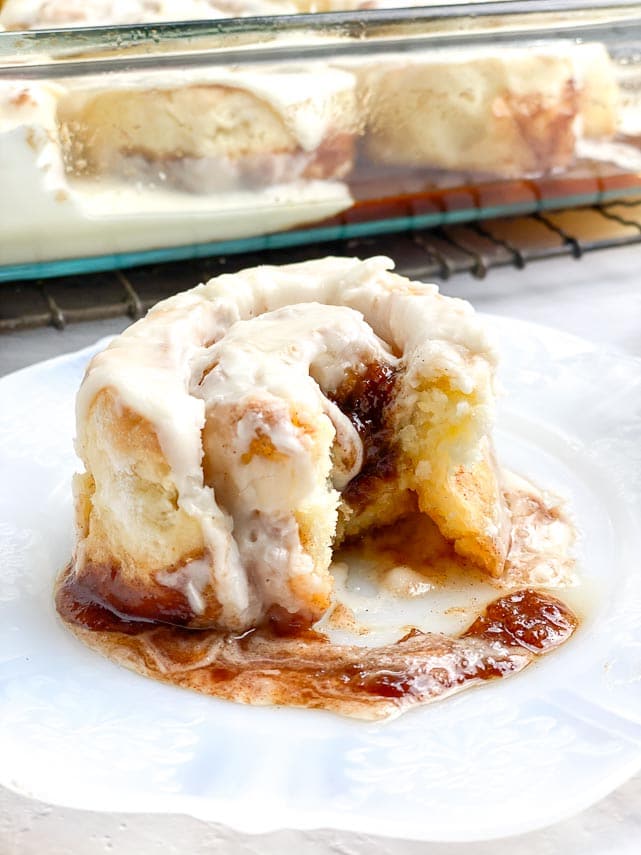
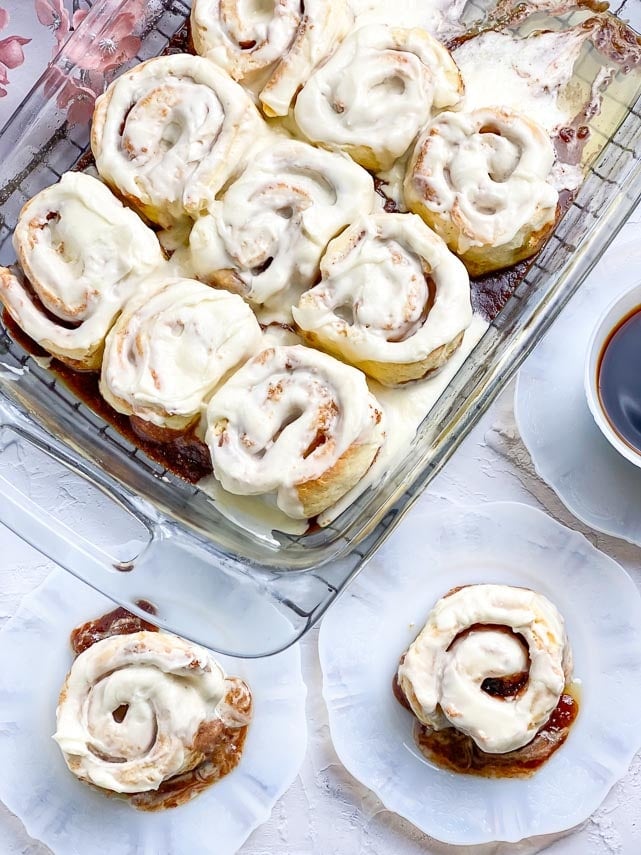
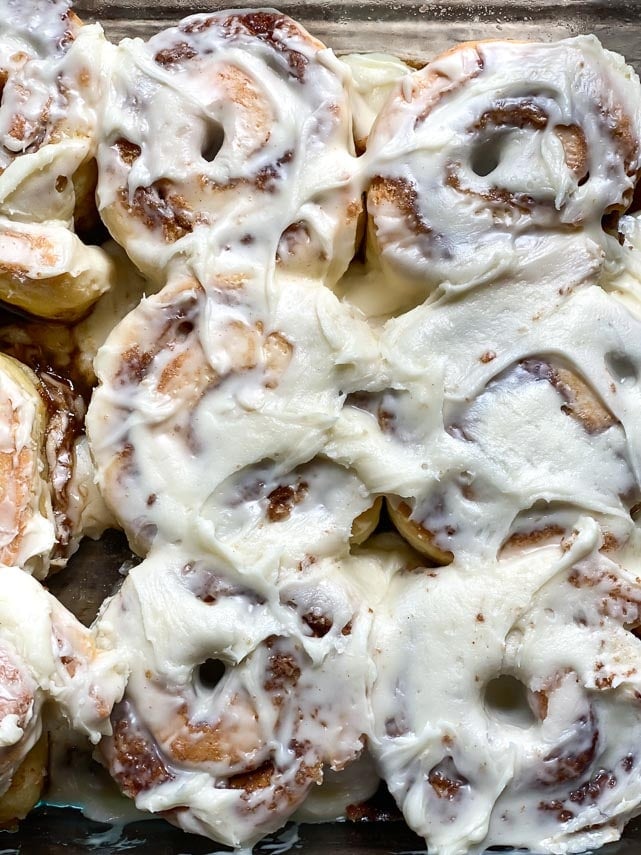
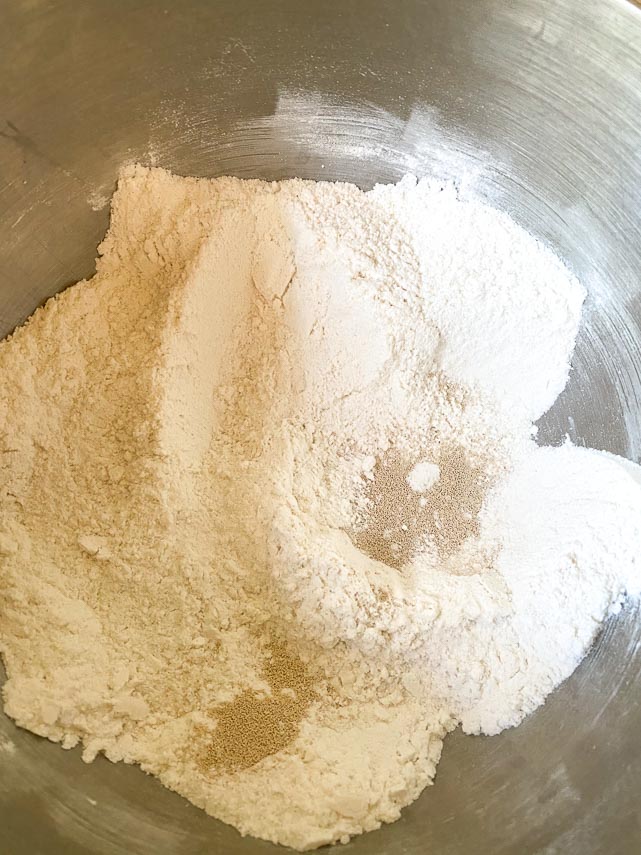
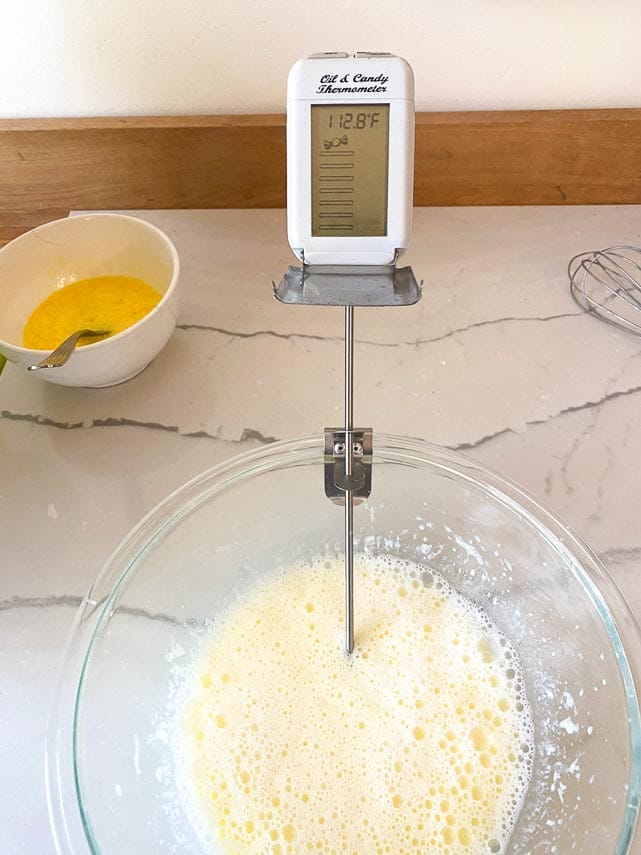
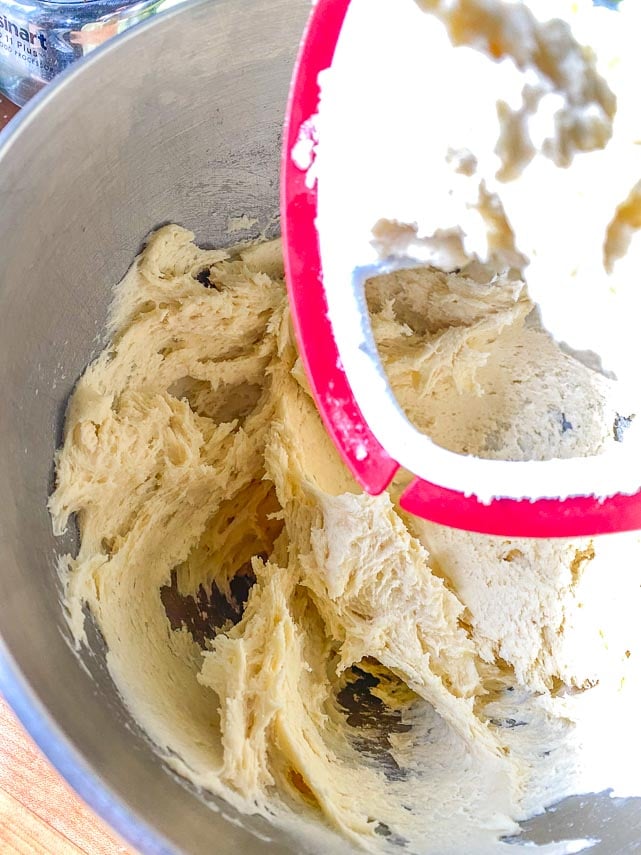
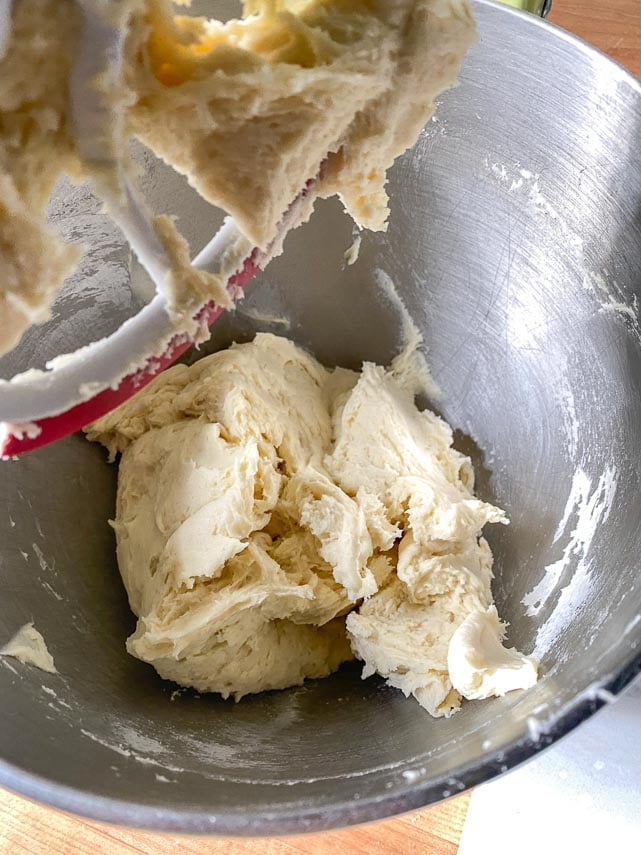
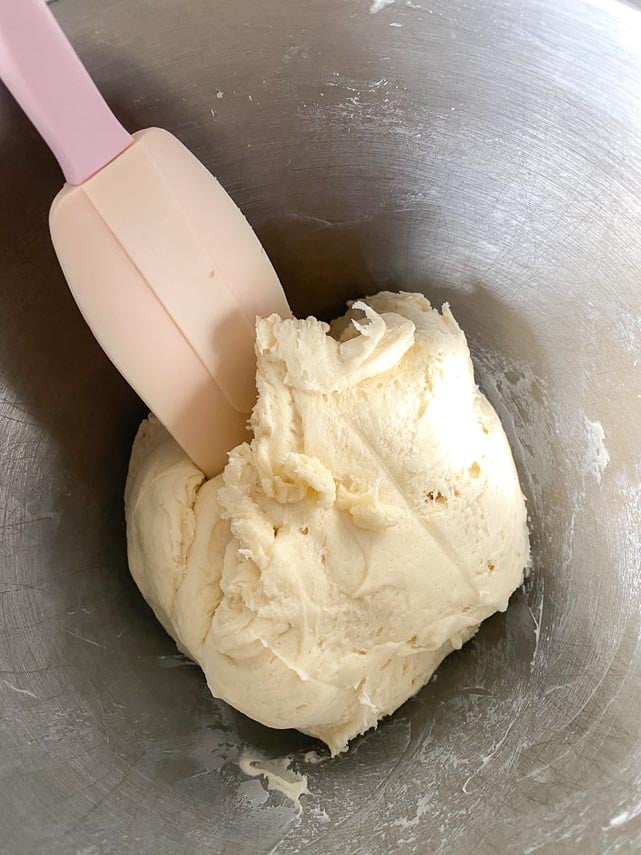
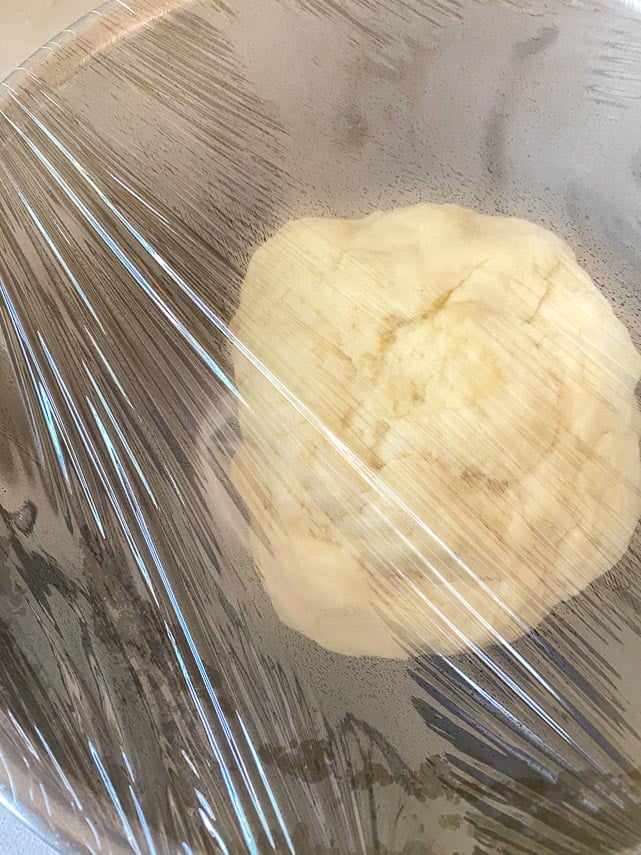
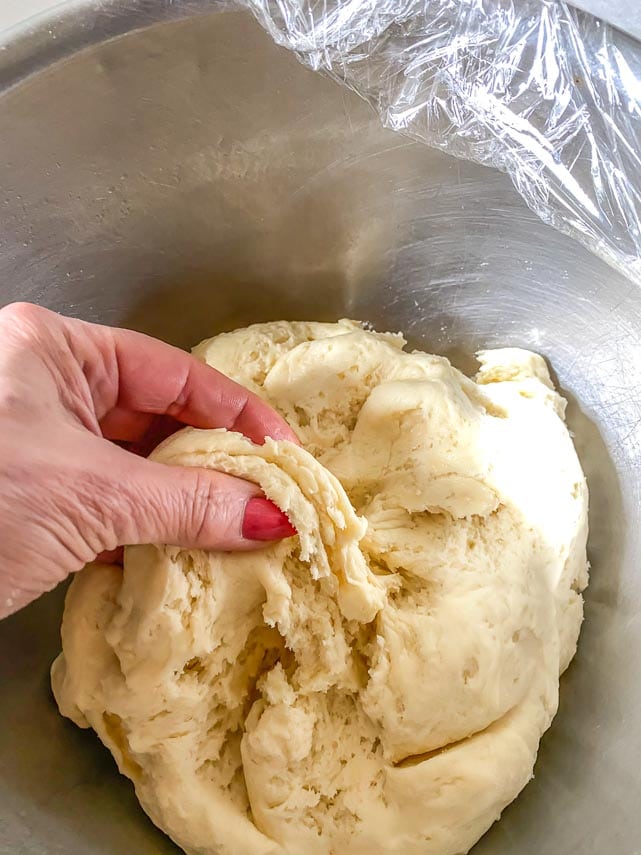
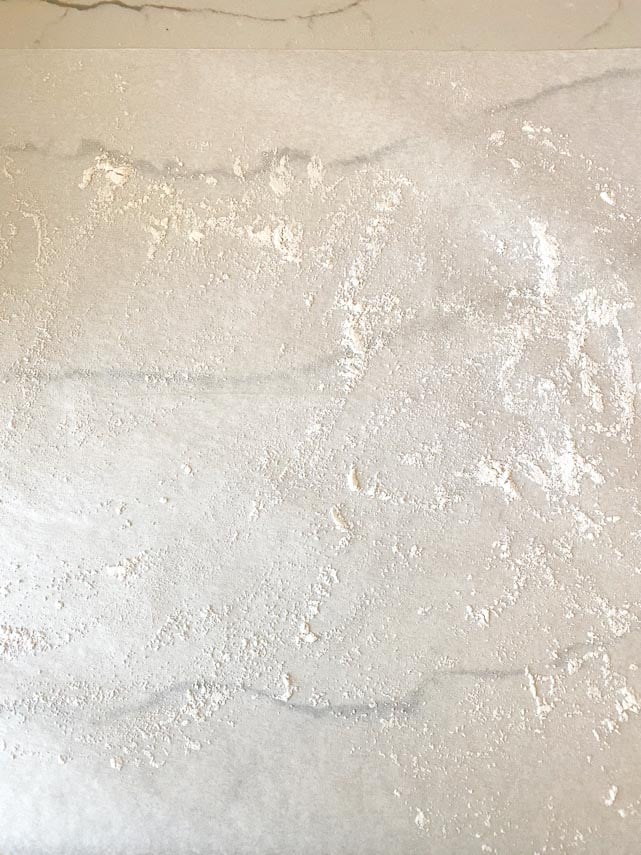
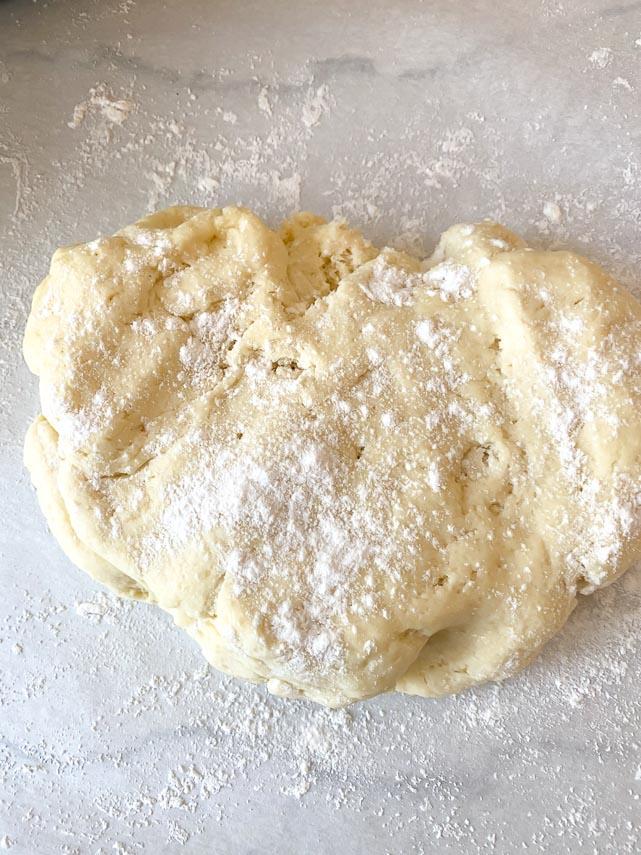
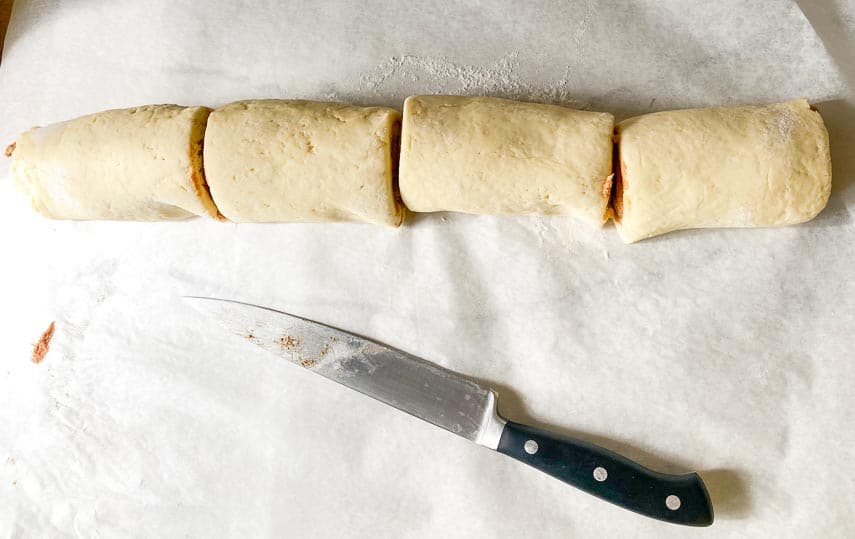
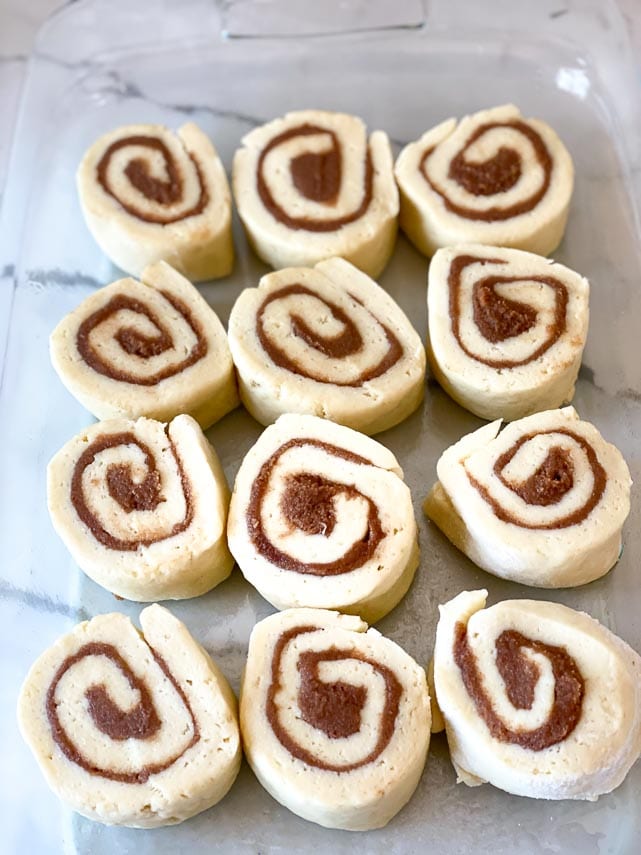
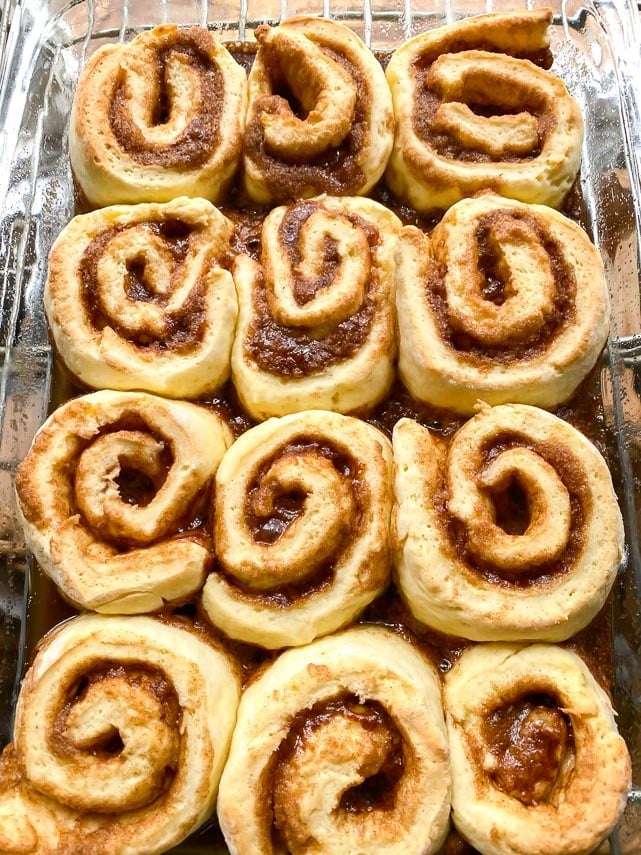
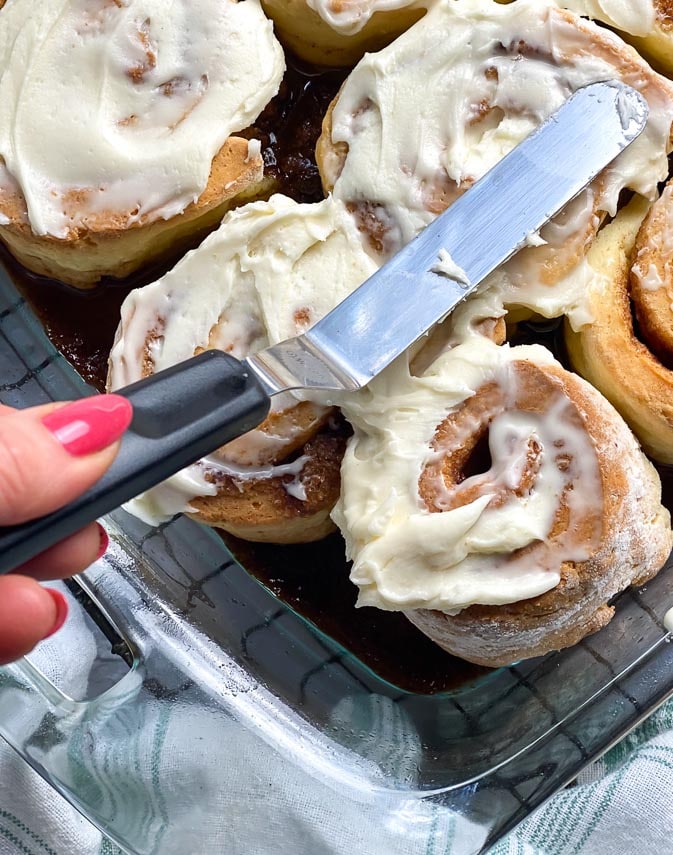
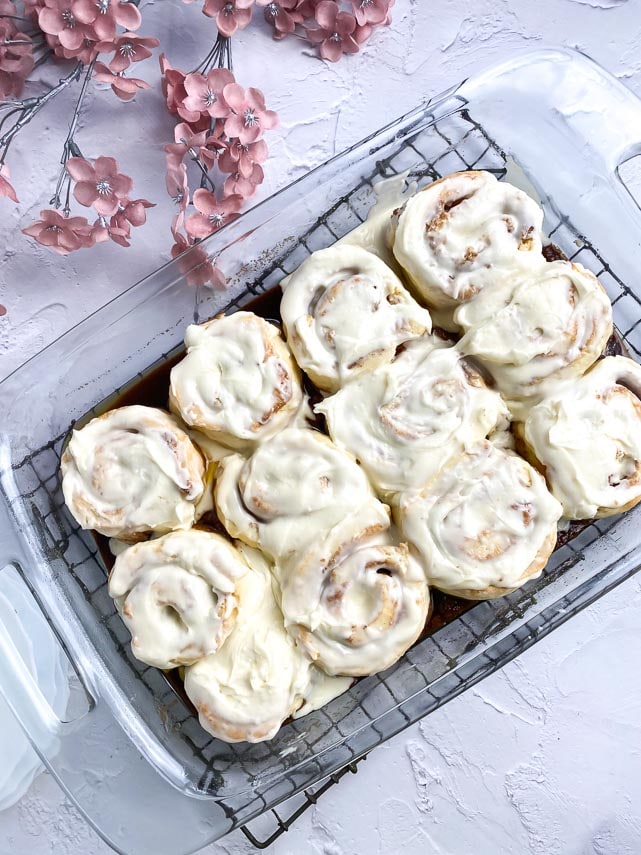
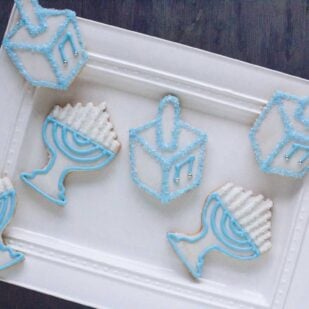
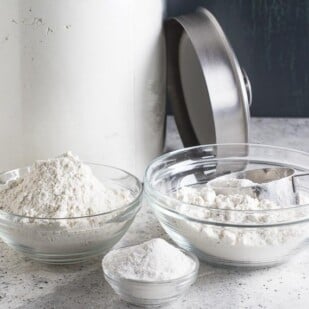
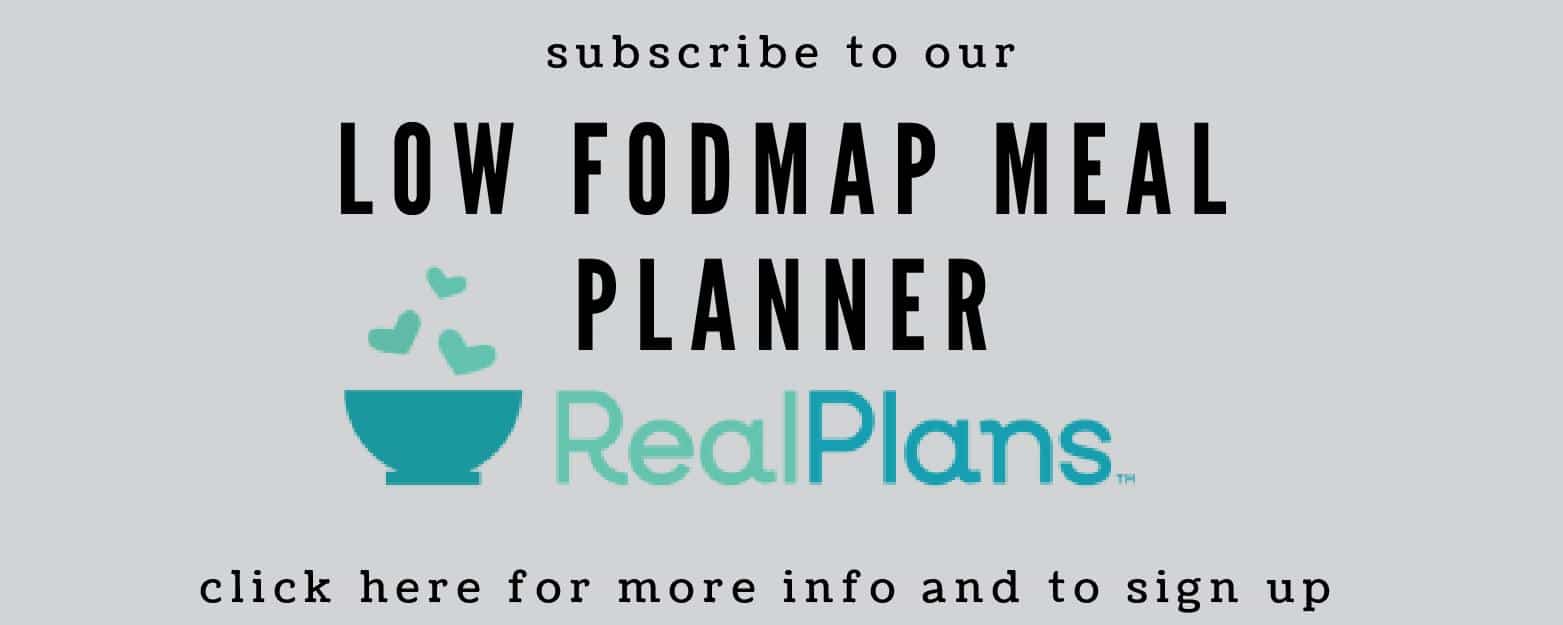
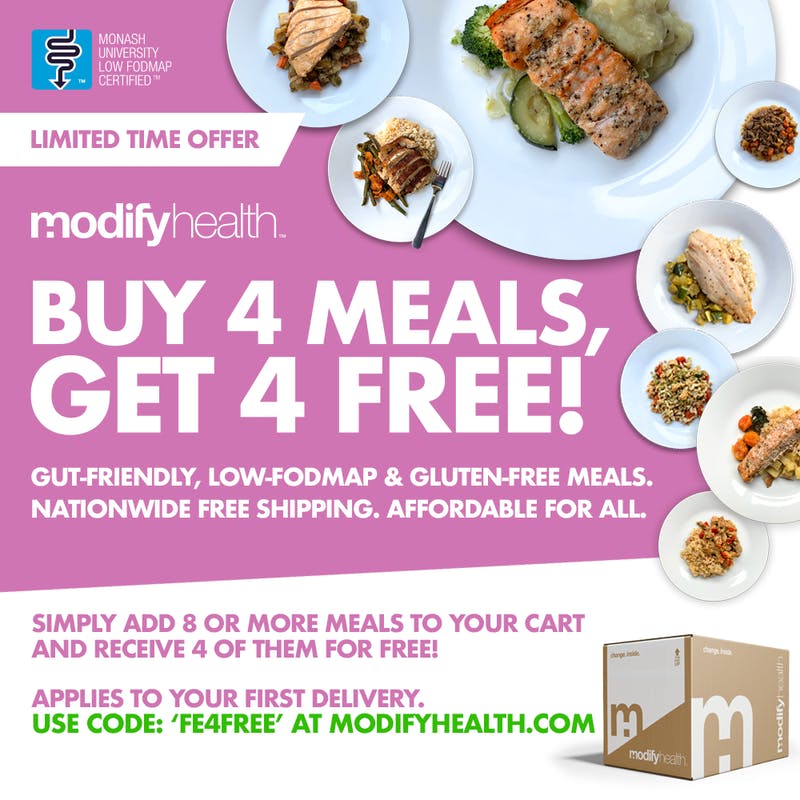


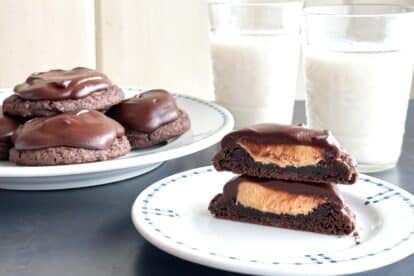

At $40.00 a boc for the flour and they won’t even deliver it, looks like I won’t be making these
There seems to be some supply problems right now, I am guessing due to COVID-19 as this was not the case a month or so ago. There are DIY options and here is one to follow.
I’ve been ordering this flour regularly this year. When unavailable through better batter website, I often find it on Amazon.
YES Thank you for pointing this out!
Can these be made the night before and just put in the fridge to be baked the next morning?
You could try BUT the recipe has NOT been tested that way and it is very persnickety. Make sure to use the ingredients called for and do let us know if you try the overnight chill. We will add notes to the recipe!
I made this today, and it was phenomenal!! My husband kept going back for more and they tasted just like regular cinnamon rolls. I did make a few changes to make the recipe dairy free as well. I used unsweetened almond milk instead of lactose free milk. I also used soy free Earth Balance rather than lactose free butter and tofutti instead of green valley cream cheese. Definitely a keeper and no tummy trouble here!!
Katelyn, I am so glad you wrote! I found this recipe to be touchy and am thrilled that you found substitutions that worked and have shared the info for al of us! And very happy you and hubby enjoyed them:) Just always remember that when making substitutions you are then on your own to monitor FODMAP loads and stacking.
So why only that one kind of flour?
It is the specific blend and especially the pectin. When tested with a variety of other flours and blends, the results were sub-par.
What if you don’t have a thermometer for the butter/milk? Suggestions?
When dealing with yeast it is always recommended that you do use one. You can try the judge by touch. The desired temperature will be warm – but not hot – to the touch. Your temperature is 98°F(37°C) so the recommended 110 – 115° will be warmer than you. If there is a chance of missing the temp, it is that folks go too high, and you risk killing the yeast. The process for this recipe is long and complex, and you are spending a fair amount of money on ingredients. If you want the best chance of success, I do suggest getting a thermometer. It will come in handy for other recipes.
Hi, I can’t get Better Batter here in the UK. Can I just add pectin into Bob’s or some other similar flour blend? Over here I use this https://www.dovesfarm.co.uk/products/freee/gluten-free-plain-white-flour-1kg
TQ!!
This recipe, as I have explained within, is VERY particular. Your flour blend contains corn and buckwheat and is very different from what I recommend. I would follow the link in the recipe for the DIY flour blend that contains pectin that replicates the one I call for.
I’m brand new to FODMAP (for my son) Can you use erythritol brown sugar and monkfruit sweetener in this recipe or is this recipe too ‘picky’ for that kind of substitute?
I would not recommend any substitutions at all in this recipe; it is, indeed, picky. FYI sugar and brown sugar are low FODMAP.